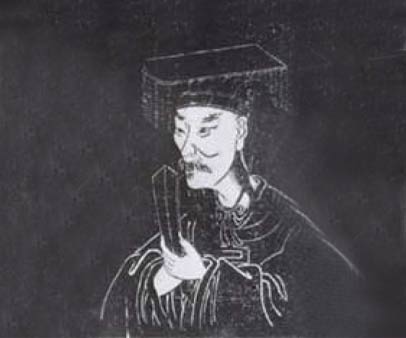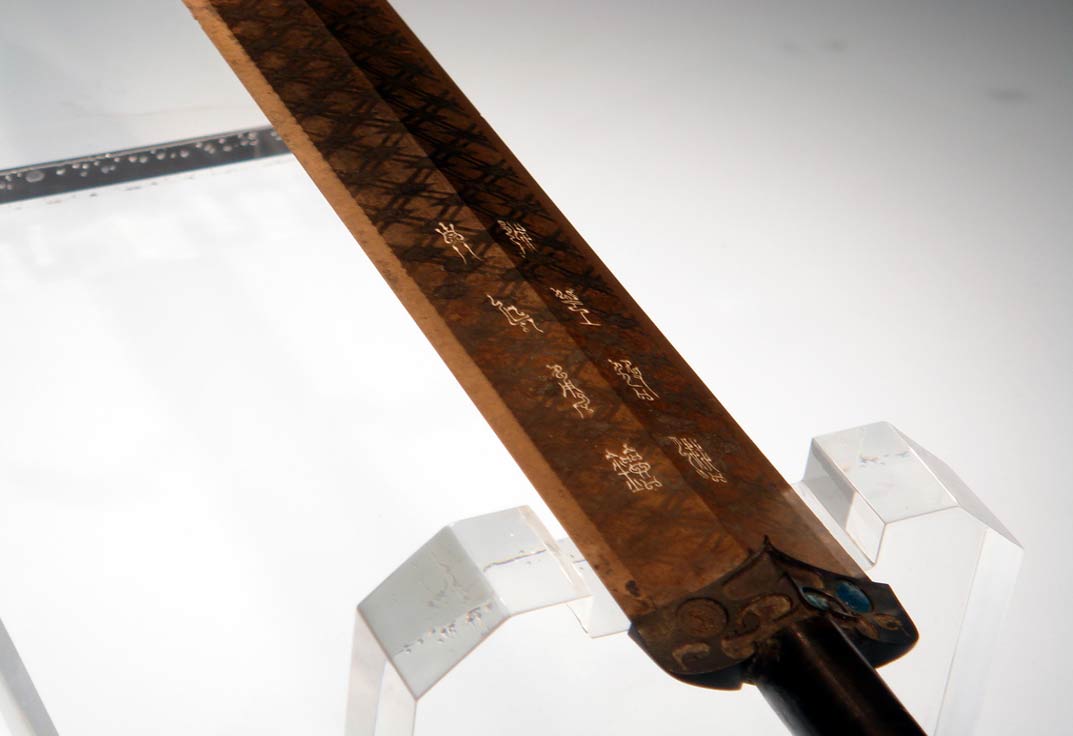Goujian: The Ancient Chinese Sword that Defied Time
Fifty years ago, a rare and unusual sword was found in a tomb in China. Despite being well over 2,000 years old, the sword, known as the Goujian, did not have a single trace of rust. The blade drew blood when an archeologist tested his finger on its edge, seemingly unaffected by the passage of time. Besides this strange quality, the craftsmanship was highly detailed for a sword made such a long time ago. Regarded as a state treasure in China today, the sword is as legendary to the Chinese people as King Arthur's Excalibur in the West.
In 1965, archaeologists were carrying out a survey in Hubei province, just 7 km (4 miles) from the ruins of Jinan, capital of the ancient Chu state, when they discovered fifty ancient tombs. During the excavations of the tombs, researchers unearthed the sword of Goujian alongside 2,000 other artifacts.
Discovery of the Goujian
According to the leader of the archeological team responsible for the excavation, it was discovered in a tomb, in a near air-tight wooden box next to a skeleton. The team was stunned when the perfectly preserved bronze sword with scabbard was removed from the box. When it was unsheathed, the blade was revealed to be untarnished despite being buried in damp conditions for two millennia. A test conducted by the archaeologists showed that the blade could easily cut a stack of twenty pieces of paper.
- Chinese man finds ancient sword in ground, uses it as kitchen knife
- 3000-year-old bronze sword discovered in China
- Tombs, Treasures, and 2,000-year-old Bronze Sword Unearthed in China

Sword of Goujian, Hubei Provincial Museum (Wikimedia Commons)
Jian swords
The Sword of Goujian is one of the earliest known Jian swords, a double-edged straight sword used during the last 2,500 years in China. Jian swords are among the earliest sword types in China and are closely associated with Chinese mythology. In Chinese folklore, it is known as "The Gentleman of Weapons" and is considered one of the four major weapons, along with the staff, spear, and the sabre.

One iron and two bronze Jian swords from the Chinese Warring states period (Wikimedia Commons)
Relatively short compared to similar historical pieces, the Gouijan sword is a bronze sword with a high concentration of copper, making it more pliant and less likely to shatter. The edges are made of tin, making them harder and capable of retaining a sharper edge. There are also small amounts of iron, lead and sulfur in the sword, and research has revealed a high proportion of sulfur and sulfide cuprum, which gives the sword its rustproof quality. Black rhombic etchings cover both sides of the blade and blue glaze and turquoise is imbedded on the sword handle. The grip of the sword is bound by silk while the pommel is composed of 11 concentric circles. The sword measures 55.7 cm long (21.9 in), including an 8.4 cm (3.3 in) handle hilt, and has a 4.6 cm (1.8 in) wide blade. It weighs 875 grams (30.9) oz.

The turquoise can be seen embedded in the sword’s handle (Wikimedia Commons)
Deciphering the inscription
On one side of the blade, two columns of text are visible with eight characters, near the hilt, that are in ancient Chinese script. The script, known as "鸟虫文" (literally "'birds and worms' characters") is characterized by intricate decorations to the defining strokes, and is a variant of zhuan that is very difficult to read. Initial analyses deciphered six of these eight characters. They read, "越王" (King of Yue) and "自作用剑" ("made this sword for (his) personal use"). The remaining two characters are likely the name of the king.

Deciphering the scripts on the Sword of Goujian (Wikipedia)
From its birth in 510 BC to its demise at the hands of Chu in 334 BC, nine kings ruled Yue, including Goujian, Lu Cheng, Bu Shou, and Zhu Gou, among others. The identity of the king that owned the sword sparked debate among archaeologists and Chinese language scholar. After more than two months, the experts formed a consensus that the original owner of the sword was Goujian (496 – 465 BC), making the sword around 2,500 years old.

King Goujian of Yue (Wikimedia Commons)
Goujian was a famous emperor in Chinese history who reigned over the Yue State during the Spring and Autumn Period (771 - 476 BC). This was a time marked by chaos within the Zhou Dynasty and takes its name from the Spring and Autumn Annals, which chronicled this period. The Spring and Autumn Period was renowned for military expeditions; these conflicts led to the perfecting of weapons to the point that they were incredibly resistant and deadly, taking years to forge and lasting for centuries. The story of Goujian and Fuchai, King of the Wu state, contending for hegemony is famous throughout China. Although Goujian’s kingdom was initially defeated by the State of Wu, Goujian would lead his army to victory 10 years later.
Unique properties
Besides its historic value, many scholars have wondered how this sword could have remained rust-free in a humid environment, for more than 2,000 years, and how the delicate decorations were carved into the sword. The sword of Goujian is still as sharp today as when it was originally crafted, and not a single spot of rust can be found on the body today.
- Durandal - The legendary Sword of Roland
- The Curse of the Samurai Muramasa Blades
- Historic Indian sword was masterfully crafted

The Goujian sword is as sharp today as it was over two millennia ago (Wikimedia Commons)
Researchers analyzed ancient bronze shards in the hope of finding a way to replicate the technology used to create the sword. They found that the sword is resistant to oxidation as a result of sulphation on the surface of the sword. This, combined with an air-tight scabbard, allowed the legendary sword to be found in such pristine condition.
Tests also show that the sword-smiths of the Wu and Yue regions in Southern China during the Spring and Autumn Period reached such a high level of metallurgy that they were able to incorporate rust-proof alloys into their blades, helping them survive the ages relatively unblemished.
Sword Damaged
In 1994, the Sword of Goujian was loaned for display in Singapore. As a workman was removing the sword from its case at the conclusion of the exhibition, he knocked the weapon, causing a 7mm-long crack. The damage caused uproar in China and it was never allowed outside the country again. It is now kept at the Hubei Provincial Museum.
Top image: The Sword of Goujian. (Llu Tao / Flickr)
References
"Sword of Goujian." HistoriaRex.com. http://historiarex.com/e/en/89-sword-of-goujian
"Sword of Swords: The Sword of Goujian." China Culture. http://www.chinaculture.org/gb/en_curiosity/2004-06/23/content_47488.htm
Andrei, Mihai. "The Sword of Goujian - Untarnished after 2700 Years." ZME Science. October 21, 2011. http://www.zmescience.com/science/archaeology/sword-goujian-21102011/
Kalamidas, Thanos. "The Blade That Defeated Millennia." Gbtimes.com. April 17, 2013. http://gbtimes.com/life/blade-defeated-millennia


















Comments
Those are NOT swords. They don't fit the hand like a true sword, and would be too heavy – not functional for warring use. They were for some other purpose. I'd guess probably mounted on something used for the control of large animals (Rhinos, Mammoths, Hippos) captured from the wild. Also, almost certainly of pre-Ice Age origin (circa 115k BC, adding the zero back to Plato’s Atlantis timeline), back when those large animals existed up there, and the entire region was warm, lush and watery.
Nobody gets paid to tell the truth.
It had no rust, because it is not made of iron.
Rust is a process which can only take place with iron.
jesus christ, is this supposed to be an 'informative' website, yet cannot get basic chemistry correct.
"...it was discovered in a tomb, in a near air-tight wooden box next to a skeleton."
and they marvel that it had no rust!!!!!
thx for the great website. i have seen no advert as said in 1 comment. there are very reasonable adverts
Beautiful piece, amazing find!
A GOOD READ!!
Also great comments, enjoyed reading them.
Thanks everyone
Pages